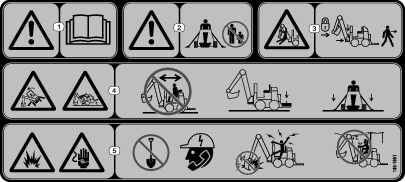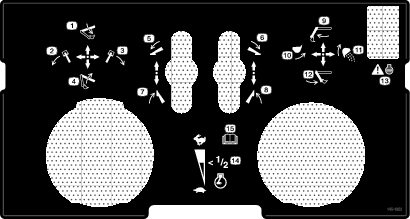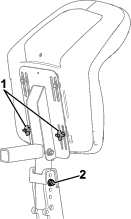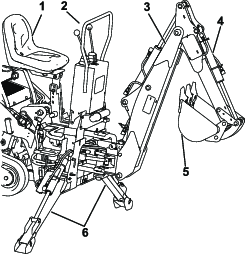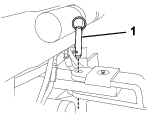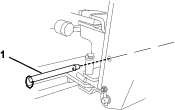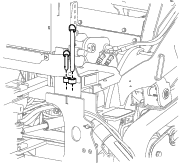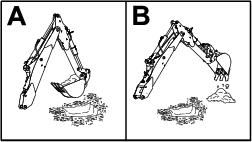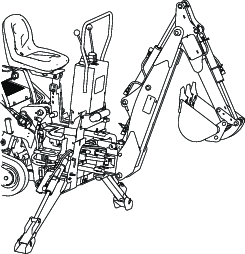Maintenance
Recommended Maintenance Schedule(s)
| Maintenance Service Interval | Maintenance Procedure |
|---|---|
| After the first hour |
|
| Before each use or daily |
|
| Every 25 hours |
|
| Before storage |
|
Greasing the Backhoe
| Maintenance Service Interval | Maintenance Procedure |
|---|---|
| Before each use or daily |
|
| Every 25 hours |
|
| Before storage |
|
Grease the 19 fittings, as shown in Figure 14 and Figure 15, every 8 operating hours. Grease all fittings immediately after every washing.
Also, grease the fitting in the swing cylinder pivot pin, located under the seat column (Figure 16).
Grease Type: General-purpose grease
-
Park the machine on a level surface, disengage the auxiliary hydraulics lever, lower the attachment, and engage the parking brake (if equipped).
-
Shut off the engine and remove the key.
-
Clean the grease fittings with a rag.
-
Connect a grease gun to each fitting.
-
Pump grease into the fittings until grease begins to ooze out of the bearings.
-
Wipe up any excess grease.
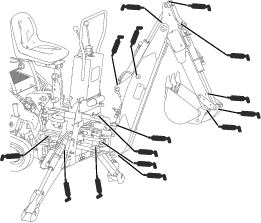
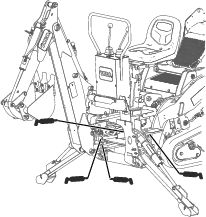
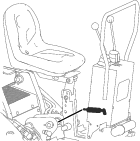
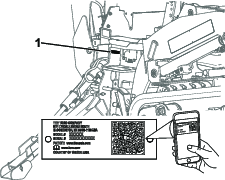

 , which means Caution, Warning,
or Danger—personal safety instruction. Failure to comply with
these instructions may result in personal injury or death.
, which means Caution, Warning,
or Danger—personal safety instruction. Failure to comply with
these instructions may result in personal injury or death.




